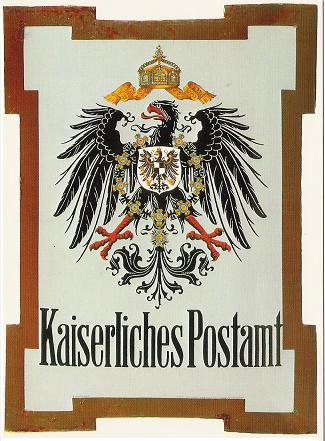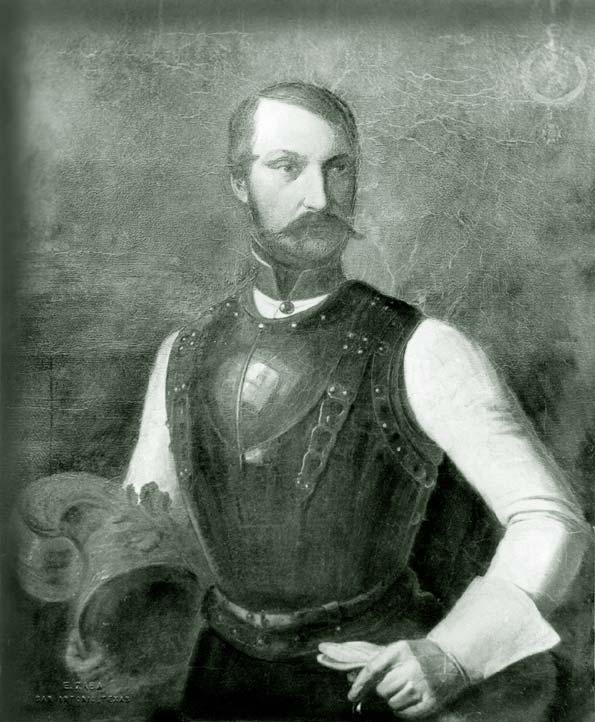|
Karl Alexander, 5th Prince Of Thurn And Taxis
, title = Prince of Thurn and Taxis , image = Karl Alexander von Thurn und Taxis.jpg , caption = , reign = 13 November 1805 – 15 July 1827 , reign-type = Period , coronation = , predecessor = Karl Anselm , successor = Maximilian Karl , succession = Head of the House of Thurn and Taxis , spouse = Duchess Therese of Mecklenburg-Strelitz , issue = Princess Charlotte LuisePrince Georg Karl Maria Theresia, Princess Esterházy of GalánthaPrincess Luise Friederike Maria Sophia, Duchess Paul Wilhelm of WürttembergMaximilian Karl, 6th Prince of Thurn and TaxisPrince Friedrich Wilhelm , house =Thurn and Taxis , father =Karl Anselm, 4th Prince of Thurn and Taxis , mother = Duchess Auguste of Württemberg , birth_date = , birth_place = Imperial City of Regensburg, Kingdom of Germany, Holy Roman Empire , death_date = , death_place = Schloss Taxis, Dischingen, Kingdom of Württember ... [...More Info...] [...Related Items...] OR: [Wikipedia] [Google] [Baidu] |
Karl Anselm, 4th Prince Of Thurn And Taxis
, image = Fürst Carl Anselm.jpg , caption = , reign = 17 March 1773 – 13 November 1805 , reign-type = Period , coronation = , predecessor = Alexander Ferdinand , successor = Karl Alexander , succession = Prince of Thurn and Taxis , spouse = Duchess Auguste of WürttembergElisabeth Hildebrand, Frau von Train , issue = Princess Maria Theresia Princess Sophie FriederikePrince Franz Johann NepomuckPrincess Henrica KarolinePrince Alexander KarlPrincess Friederike DorotheaKarl Alexander, 5th Prince of Thurn and TaxisPrince Friedrich Johann NepomuckNikolaus, Herr von Train , house =House of Thurn and Taxis , father =Alexander Ferdinand, 3rd Prince of Thurn and Taxis , mother = Margravine Sophie Christine of Brandenburg-Bayreuth , birth_date = , birth_place = Frankfurt am Main, Free Imperial City of Frankfurt, Kingdom of Germany, Holy Roman Empire , death_date = , death_place = Winzer b ... [...More Info...] [...Related Items...] OR: [Wikipedia] [Google] [Baidu] |
Reichspost
''Reichspost'' (; "Imperial Mail") was the name of the postal service of Germany from 1866 to 1945. ''Deutsche Reichspost'' Upon the out break of the Austro-Prussian War of 1866 and the break-up of the German Confederation in the Peace of Prague, the North German Confederation was established, instigated by the Prussian minister-president Otto von Bismarck. Originally a military alliance, it evolved to a federation with the issuing of a constitution with effect from 1 July 1867. In the course of the war, Prussian troops had occupied the Free City of Frankfurt and the King of Prussia (later to become German Emperor) had purchased the remnants of the Thurn-und-Taxis Post organisation. According to article 48, the federal area of the Northern German states, ''de facto'' an enlarged Prussia, came under the united postal authority, led by director Heinrich von Stephan. With the German unification upon the Franco-Prussian War of 1870–1871, the ''Deutsche Reichspost'' was esta ... [...More Info...] [...Related Items...] OR: [Wikipedia] [Google] [Baidu] |
Confederation Of The Rhine
The Confederated States of the Rhine, simply known as the Confederation of the Rhine, also known as Napoleonic Germany, was a confederation of German client states established at the behest of Napoleon some months after he defeated Austria and Russia at the Battle of Austerlitz. Its creation brought about the dissolution of the Holy Roman Empire shortly afterward. The Confederation of the Rhine lasted from 1806 to 1813.Hans A. Schmitt. "Germany Without Prussia: A Closer Look at the Confederation of the Rhine". ''German Studies Review'' 6, No. 4 (1983), pp 9–39. The founding members of the confederation were German princes of the Holy Roman Empire. They were later joined by 19 others, altogether ruling a total of over 15 million subjects. This granted a significant strategic advantage to the French Empire on its eastern frontier by providing a buffer between France and the two largest German states, Prussia and Austria (which also controlled substantial non-German lands). Fo ... [...More Info...] [...Related Items...] OR: [Wikipedia] [Google] [Baidu] |
Gloria, Princess Of Thurn And Taxis
Gloria of Thurn and Taxis (''Mariae Gloria Ferdinanda Joachima Josephine Wilhelmine Huberta''; born Countess Gloria von Schönburg-Glauchau, 23 February 1960) is a German socialite, businesswoman, Catholic activist, and artist. Through her marriage to Johannes, 11th Prince of Thurn and Taxis, she became the Princess Consort of Thurn und Taxis. Early life and family Countess Gloria von Schönburg-Glauchau was born on 23 February 1960 in Stuttgart, Baden-Württemberg, West Germany. Her father, Joachim, Count of Schönburg-Glauchau, was the nominal head of the Glauchau branch of the German princely House of Schönburg, a mediatised dynasty within the former Holy Roman Empire. Her mother, Countess Beatrix Széchenyi de Sárvár-Felsővidék, was a member of the Hungarian nobility and a descendant of Count István Széchenyi. Her parents divorced in 1986 and her father married a second time to Ursula Zwicker. Gloria is one of five children from her father's two marriages. She has 2 ... [...More Info...] [...Related Items...] OR: [Wikipedia] [Google] [Baidu] |
Duchy Of Mecklenburg-Strelitz
The Duchy of Mecklenburg-Strelitz was a duchy in northern Germany consisting of the eastern fifth of the historic Mecklenburg region, roughly corresponding with the present-day Mecklenburg-Strelitz district (the former Lordship of Stargard), and the western exclave of the former Bishopric of Ratzeburg in modern Schleswig-Holstein. At the time of its establishment, the duchy bordered on the territory of Swedish Pomerania in the north and of Brandenburg in the south. History After more than five years of dispute over succession to the House of Mecklenburg, the duchy was established in 1701 in the territory of the former duchy of Mecklenburg-Güstrow. The Güstrow branch of the House of Mecklenburg had died out with the death of Duke Gustav Adolph in 1695. Duke Frederick William of Mecklenburg-Schwerin claimed heirship, but he had to deal with the demands of his uncle Adolphus Frederick, husband of Mary of Mecklenburg-Güstrow, the daughter of Gustav Adolph. The emissaries of ... [...More Info...] [...Related Items...] OR: [Wikipedia] [Google] [Baidu] |
Neustrelitz
Neustrelitz (; East Low German: ''Niegenstrelitz'') is a town in the Mecklenburgische Seenplatte district in the state of Mecklenburg-Vorpommern, Germany. It is situated on the shore of the Zierker See in the Mecklenburg Lake District. From 1738 until 1918 it was the capital of the Duchy of Mecklenburg-Strelitz. From 1994 until 2011 it was the capital of the district of Mecklenburg-Strelitz. The name ''Strelitz'' is derived from the Polabian word ''Strelci'', meaning "archers" or "shooters".The related Polish form '' Strzelce'' is still a common toponym in Poland. History The village of Strelitz was first mentioned in 1278. It grew to a small town in the following centuries. In the 17th century Strelitz was a part of the duchy of Mecklenburg-Güstrow, which ceased to exist after the death of the last duke in 1695. Afterwards the new Duchy of Mecklenburg-Strelitz was established (1701). This small duchy contained the present-day district and an exclave around Ratzeburg, which i ... [...More Info...] [...Related Items...] OR: [Wikipedia] [Google] [Baidu] |
Princess Friederike Of Hesse-Darmstadt
Princess Friederike Caroline Luise of Hesse-Darmstadt (20 August 1752 – 22 May 1782) was a member of the House of Hesse and by marriage a Duchess of Mecklenburg-Strelitz. She is the direct most recent common matrilineal ancestress (through women only) of Queen Margrethe II of Denmark, King Willem-Alexander of the Netherlands, King Albert II of Belgium, King Harald V of Norway and Grand Duke Henri of Luxembourg. Life Friederike was born in Darmstadt, the eldest daughter of Prince George William of Hesse-Darmstadt, second son of Louis VIII, Landgrave of Hesse-Darmstadt, and Countess Maria Louise Albertine of Leiningen-Falkenburg-Dagsburg. She married Duke Charles of Mecklenburg-Strelitz on 18 September 1768 in Darmstadt. They had ten children together. Two daughters became queens consort as Louise would marry Frederick William III of Prussia and Frederica would marry Ernest Augustus, King of Hanover. Friederike died of complications resulting from child birth in Hanove ... [...More Info...] [...Related Items...] OR: [Wikipedia] [Google] [Baidu] |
Charles II, Grand Duke Of Mecklenburg
Charles II (Charles Louis Frederick; 10 October 1741 – 6 November 1816) was ruler of the state of Mecklenburg-Strelitz from 1794 until his death. Originally ruling as duke, he was raised to the rank of grand duke in 1815. Prior to succeeding to the throne, he served as Governor of Hanover from 1776 to 1786. Early life and service in Hanover Duke Charles Louis Frederick of Mecklenburg was born in Mirow, the second son of Duke Charles Louis Frederick of Mecklenburg and his wife Princess Elisabeth Albertine of Saxe-Hildburghausen. On 11 December 1752 his uncle Adolphus Frederick III died and was succeeded by Charles's older brother, who became Adolphus Frederick IV. With his brother's accession Charles was taken with the rest of the family from Mirow to the capital Strelitz. From the age of four, Charles looked set for a career in Hanoverian service after being given a Captain's commission. His sister Charlotte married the Elector of Hanover, King George III of the United King ... [...More Info...] [...Related Items...] OR: [Wikipedia] [Google] [Baidu] |
Napoleonic Wars
The Napoleonic Wars (1803–1815) were a series of major global conflicts pitting the French Empire and its allies, led by Napoleon I, against a fluctuating array of European states formed into various coalitions. It produced a period of French domination over most of continental Europe. The wars stemmed from the unresolved disputes associated with the French Revolution and the French Revolutionary Wars consisting of the War of the First Coalition (1792–1797) and the War of the Second Coalition (1798–1802). The Napoleonic Wars are often described as five conflicts, each termed after the coalition that fought Napoleon: the Third Coalition (1803–1806), the Fourth (1806–1807), the Fifth (1809), the Sixth (1813–1814), and the Seventh (1815) plus the Peninsular War (1807–1814) and the French invasion of Russia (1812). Napoleon, upon ascending to First Consul of France in 1799, had inherited a republic in chaos; he subsequently created a state with stable financ ... [...More Info...] [...Related Items...] OR: [Wikipedia] [Google] [Baidu] |
Perpetual Imperial Diet
The Perpetual Diet of Regensburg or the Eternal Diet of Regensburg, (german: Immerwährender Reichstag) also commonly called in English the perpetual Diet of Ratisbon,Jean Berenger, C.A. Simpson, ''The Habsburg Empire 1700-1918'' (2014), p. 134 from the city’s Latin name, was a session of the Imperial Diet (''Reichstag'') of the Holy Roman Empire that sat continuously from 1663 to 1806 in Regensburg in present-day Bavaria, Germany. __NOTOC__ Previously, the Diet had been convened in different cities but, beginning in 1594, it met only in the town hall in Regensburg. On 20 January 1663, the Diet convened to deal with threats from the Ottoman Empire (the Turkish Question). Since the Peace of Westphalia in 1648, the Holy Roman Emperor had been formally bound to accept all decisions made by the Diet. Hence, out of fear that the Emperor would disregard the Diet's role by not calling sessions, it never dissolved and became a perpetual diet. Therefore, no final report of its decisions, ... [...More Info...] [...Related Items...] OR: [Wikipedia] [Google] [Baidu] |
University Of Mainz
The Johannes Gutenberg University Mainz (german: Johannes Gutenberg-Universität Mainz) is a public research university in Mainz, Rhineland Palatinate, Germany, named after the printer Johannes Gutenberg since 1946. With approximately 32,000 students (2018) in about 100 schools and clinics, it is among the largest universities in Germany. Starting on 1 January 2005 the university was reorganized into 11 faculties of study. The university is a member of the German U15, a coalition of fifteen major research-intensive and leading medical universities in Germany. The Johannes Gutenberg University is considered one of the most prestigious universities in Germany. The university is part of the IT-Cluster Rhine-Main-Neckar. The Johannes Gutenberg University Mainz, the Goethe University Frankfurt and the Technische Universität Darmstadt together form the Rhine-Main-Universities (RMU). History The first University of Mainz goes back to the Archbishop of Mainz, Prince-elector and ... [...More Info...] [...Related Items...] OR: [Wikipedia] [Google] [Baidu] |





